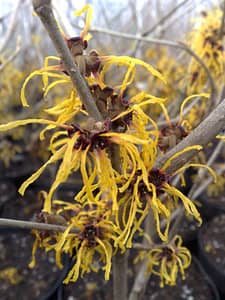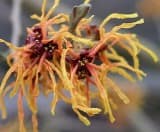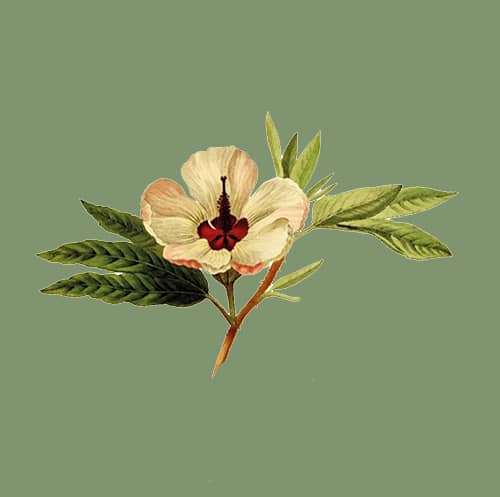Bewitched by Hamamelis
With their scented, spider-shaped flowers, Hamamelis sparkle in the winter sunlight and herald the coming of spring. Their crimped petals in hues of red, orange and yellow always put a smile on my face and brighten even the gloomiest of days.
Hamamelis has a long history of use by humans. They are more commonly known as witch hazels, and it is from the bark of Hamamelis virginia that the astringent witch hazel is extracted. From a small genus of five species there are now more than 100 cultivars, and the good news is that there is one to suit almost every garden.
One of the most compact cultivars is Hamamelis x intermedia ‘Harry’, growing to 2.5m x 2.5m. It is an early flowering shrub with large ribbon-like, light orange flowers and a fresh floral fragrance. ‘Diane’ is a popular selection with sweetly scented, rich coppery-red flowers and a spectacular display of autumn leaves in shades of yellow, orange and red. At 4m x 4m it is one of the larger cultivars, and has a particularly spreading habit. ‘Orange Peel’ is particularly well named. With petals like candied peel and the sweet scent of marmalade, it flowers through January and February and colours well in the autumn. ‘Barmsted Gold’ has eye-catching bright yellow flowers that smell of bergamot. It is one of the most commonly available cultivars and is strong, reliable and free-flowering – great for beginners!
My favourite is ‘Vesna’, a vase-shaped witch hazel that is less spreading than most, growing taller than it does wide. It has pretty orange-yellow flowers that smell of honey and a beautiful display of yellow and orange leaves in the autumn.
Hamamelis are versatile shrubs and thrive in many gardens; however, they do prefer a slightly acidic soil that holds water in summer and drains well in winter. The only real downside is that Hamamelis take between four and six years to get going, so you will have to be patient. But they are worth waiting for: in a few years you will be rewarded by a dazzling display of flowers that will become more prolific each year and leave you smiling on the coldest winter days.
Choose an open site with good light and water well while they establish. They flower on one-year-old wood so if required prune little and often rather than cutting back into the plant.




